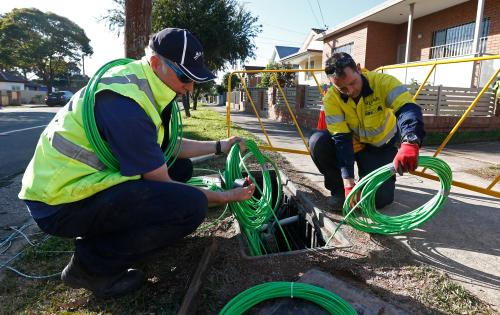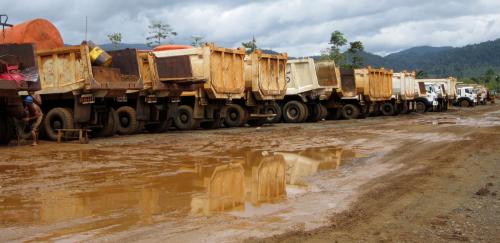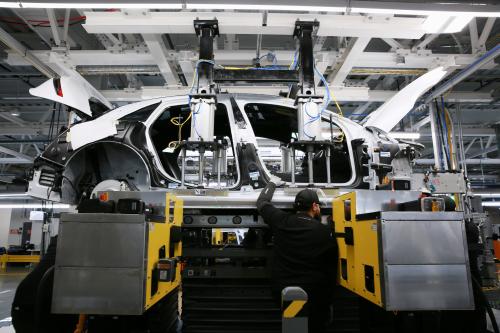To bolster economic growth in the coming years, China will face increasing demands on its energy resources. A number of new and developing technologies will allow the country to balance increased energy demands with environmental and public health concerns. A new paper in English and Chinese from Darrell M. West and Ye Qi investigates both the factors contributing to increased energy demand and the technologies that will mitigate the negative effects of higher energy consumption.
China’s rapid rise has lifted millions out of poverty in recent decades, but sustaining this trend requires high economic growth rates. From 2014 to 2016, the annual rate of GDP growth has fallen from 7.6 percent to 6.7 percent. This slowdown coincides with a rapidly aging population: 10 percent of Chinese are currently over 65, a figure that will rise to 33 percent by 2050. Without sufficient economic growth, a higher proportion of retirees will strain budgets for social services. Chinese energy demands continue to rise despite slow growth and an aging population: per capita energy consumption has quadrupled since 1980. Boosting economic growth and meeting future energy demands requires rethinking how energy is produced, distributed, and consumed in China.
Renewable energy and smart infrastructure
Higher energy consumption could have immediate public health and environmental impacts. Poor air quality is estimated to cause 350,000 to 500,000 deaths in China each year; installing more wind, solar, and hydroelectric capacity would reduce harmful emissions from fossil energy sources. China’s National Energy Administration plans to spend $360 billion on renewable energy to meet a goal of 15 percent non-fossil energy production by 2020. Upgrading energy infrastructure with smart grids would allow for renewable energy distribution from western regions to coastal cities, while smart meters would provide information to consumers on how to lower their overall energy use.
Rapid urbanization in China, with 60 percent of the population now living in cities, has led to a growing personal vehicle fleet that contributes to traffic congestion and emissions. Beijing alone has 5.6 million vehicles, and last year’s air quality data for the capital showed over 200 days with particulate matter greater than 150 micrograms per cubic meter, levels considered unhealthy. A combination of autonomous vehicles and traffic systems with integrated sensors could alleviate traffic congestion and air pollution in major cities. Autonomous vehicles can both communicate with dynamic traffic signals to change cycles based on real-time traffic volume and receive locations of available parking spaces. Less time spent idling in traffic or searching for parking would represent a substantial reduction in emissions in large Chinese cities.
Expanding internet coverage
To promote sustainable economic development, China has a proposed an “Internet Plus” initiative that will modernize manufacturing to produce higher value-added goods. Rural China will benefit from increased internet connectivity, given that only 30 percent of these areas currently have internet access. In agriculture, internet-connected monitoring systems can reduce the amount of water and fertilizer required to grow crops. Bridging the urban-rural divide in internet connectivity allows more of the country to use new technologies for boosting productivity and managing energy consumption.
Read the entire report “Integrating digital technologies and energy management in China” in English or Chinese.







Commentary
New approaches for meeting China’s growing energy demands
April 5, 2017